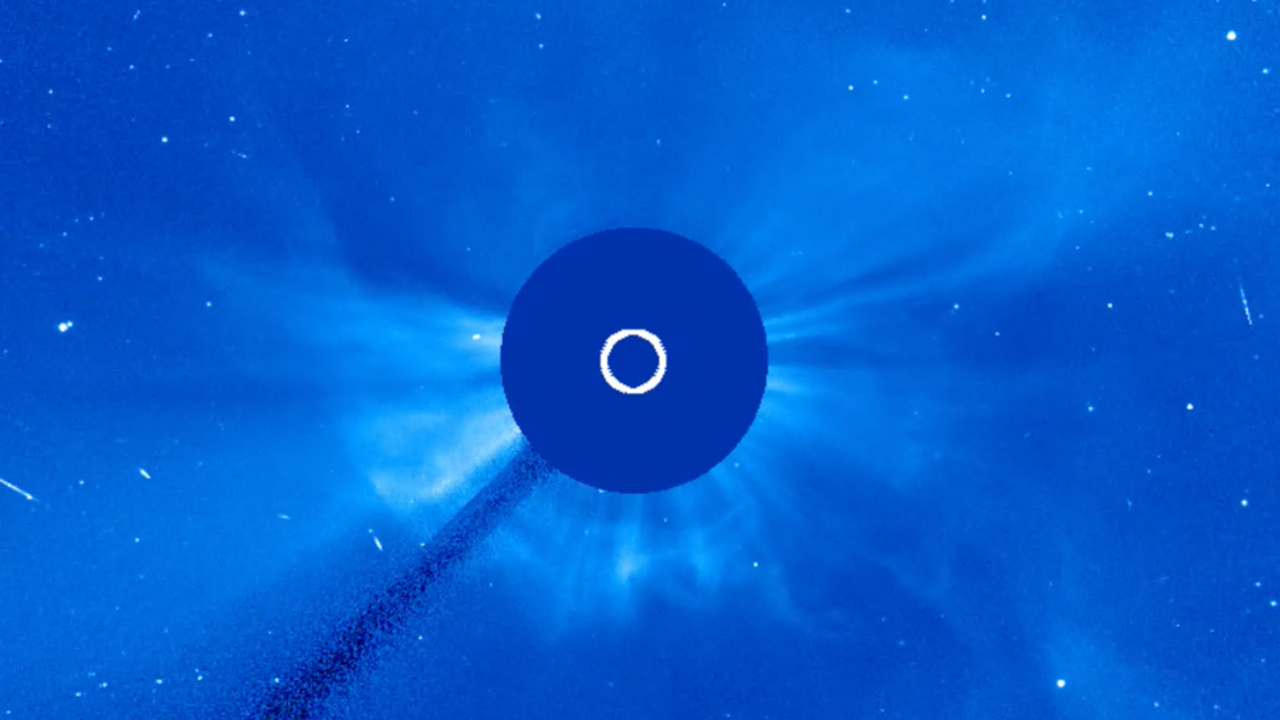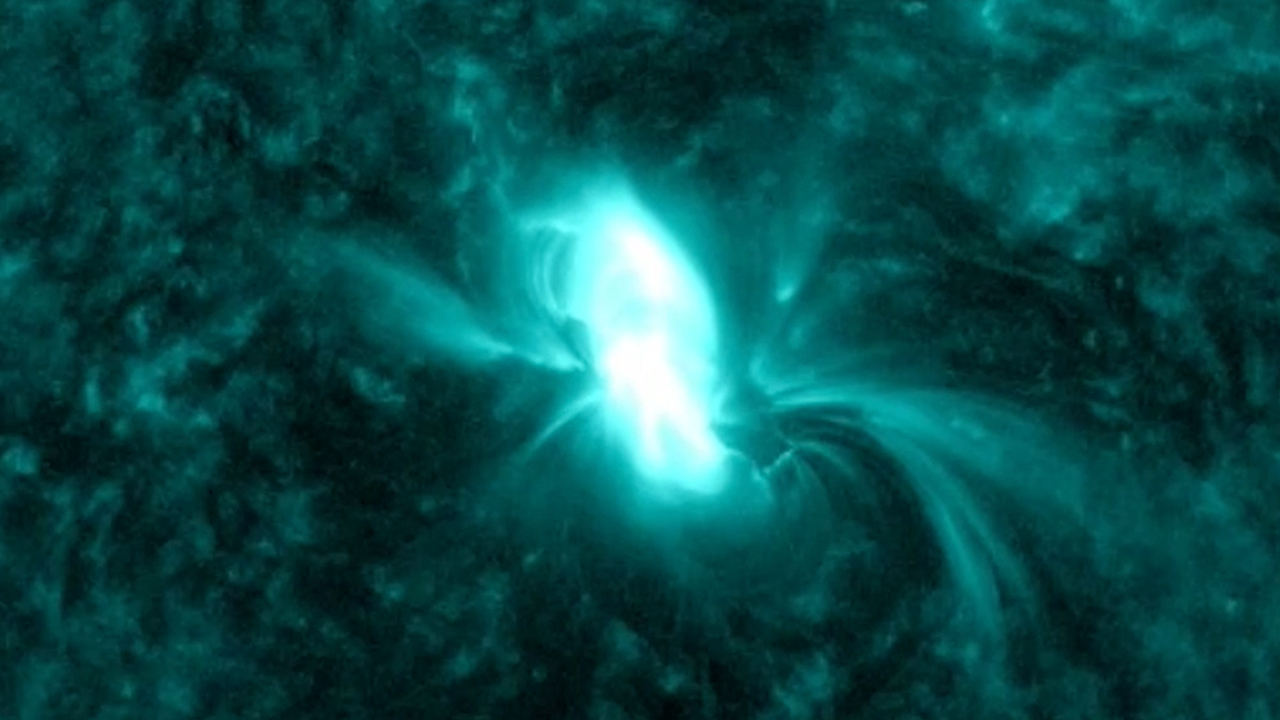Sun outburst goes 'cannibal' as fast new blob overtakes a slower one
It's been a busy few days for our sun, which has produced three of the outbursts that scientists call coronal mass ejections (CMEs) since Monday (Nov. 1).
CMEs shoot globs of gas and magnetic fields out into space, often from sunspots, which are knots in the sun's magnetic field. On Nov. 1 and Nov. 2, a sunspot designated AR2887 unleashed two of these outbursts. Then, later in the day on Tuesday (Nov. 2), a second sunspot called AR2891 produced a CME as well.
That third outburst, it turns out, is moving more quickly than its two predecessors, so it swept through all of one previous CME and part of the other, according to monitors at SpaceWeather.com — hence the moniker "cannibal" CME.
Related: Solar storm hits Earth, bringing northern lights to New York
All three CMEs have been headed more or less toward Earth, and scientists predict that the resulting large CME will arrive at Earth this evening (Nov. 3) and produce geomagnetic storms beginning on Thursday (Nov. 4).
The Space Weather Prediction Center (SWPC) of the National Oceanic and Atmospheric Administration (NOAA), which tracks CMEs and similar events, has declared a minor geomagnetic storm watch for Wednesday and a moderate watch for Thursday.
As a result of these storms, SWPC has warned of potential power grid fluctuations and irregularities in satellite orientation. The storms may also trigger stunning aurora displays of the northern lights as far south as New York, Wisconsin and Washington, the prediction noted.
Breaking space news, the latest updates on rocket launches, skywatching events and more!
The sun's activity is governed by an 11-year cycle; currently, the sun is in what scientists have labeled "solar cycle 25." This cycle is expected to peak in 2025, and early predictions suggested it would be a fairly moderate cycle, much like its predecessor.
Email Meghan Bartels at mbartels@space.com or follow her on Twitter @meghanbartels. Follow us on Twitter @Spacedotcom and on Facebook.

Meghan is a senior writer at Space.com and has more than five years' experience as a science journalist based in New York City. She joined Space.com in July 2018, with previous writing published in outlets including Newsweek and Audubon. Meghan earned an MA in science journalism from New York University and a BA in classics from Georgetown University, and in her free time she enjoys reading and visiting museums. Follow her on Twitter at @meghanbartels.


